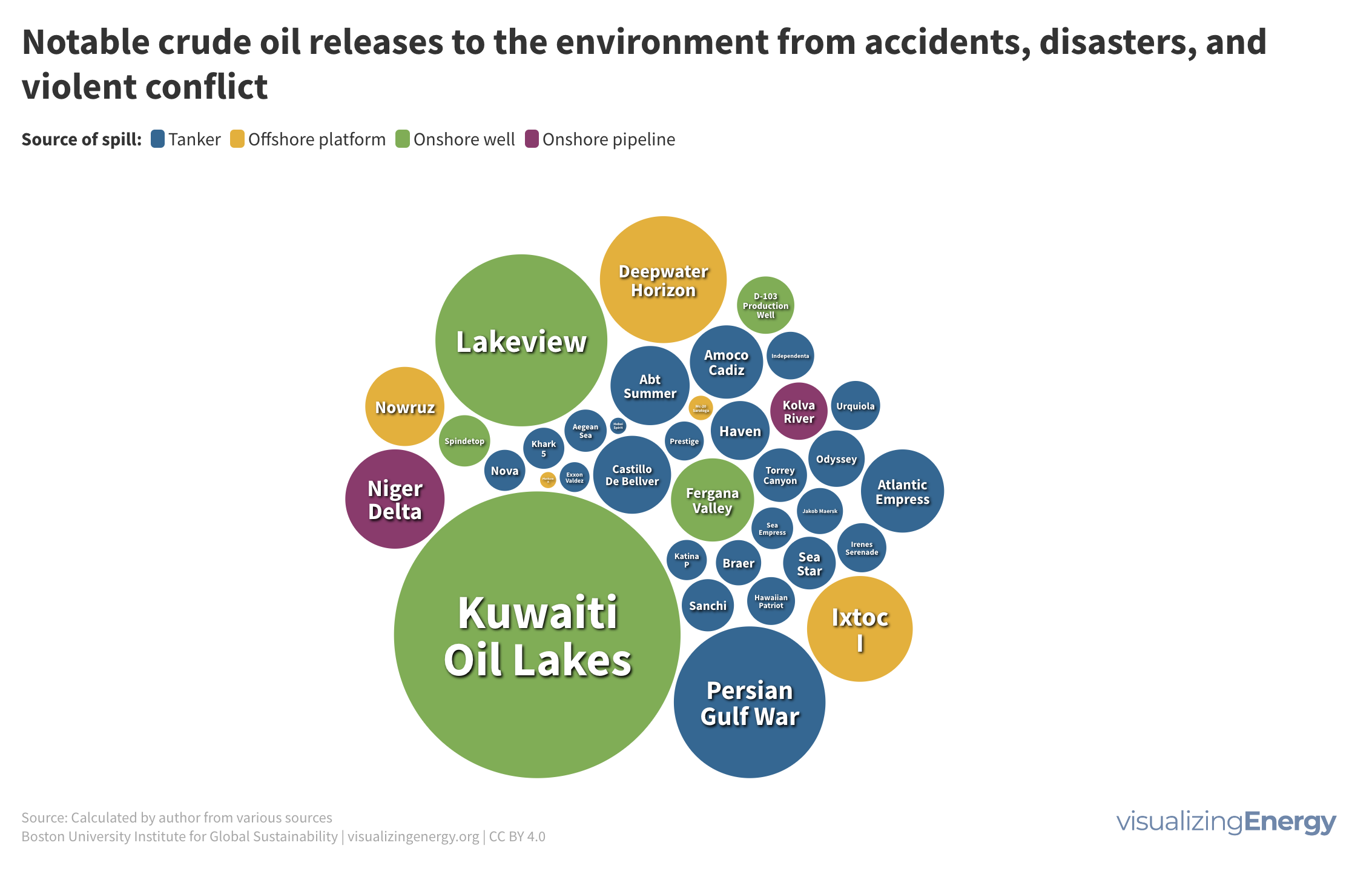
Oil spills: when, where, how big?
Since the birth of the modern oil industry in the late 19th century, tens of millions of wells have been drilled, and upwards of 1.5

Since the birth of the modern oil industry in the late 19th century, tens of millions of wells have been drilled, and upwards of 1.5
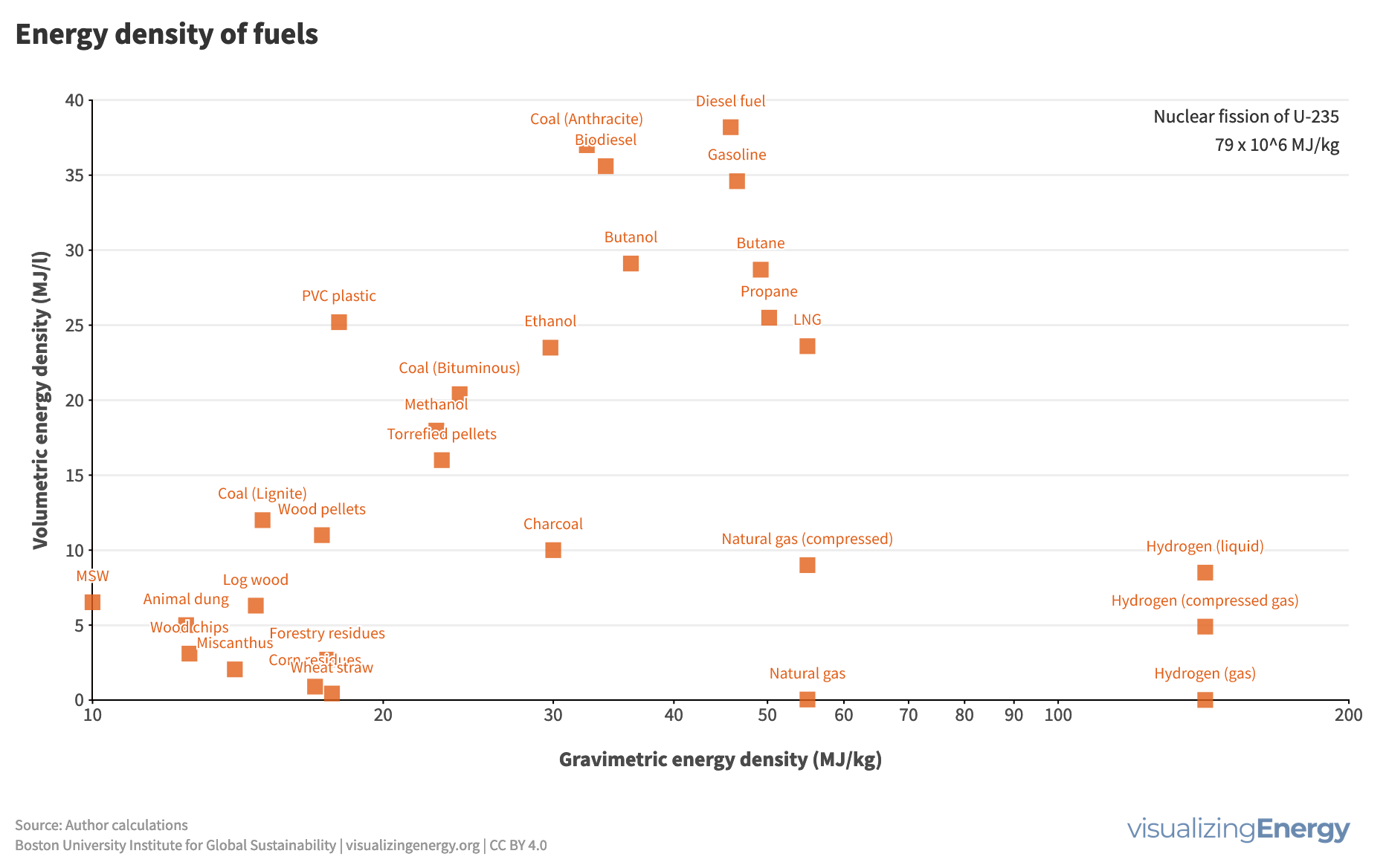
Fuels like wood, diesel, and natural gas have shaped human energy history, driven by technological, economic, and environmental forces. Liquid fuels from oil, with their high mass and volumetric energy density, led to their supremacy in transportation. Shifts in fuel types also influence the devices that convert them into energy services.

The reserve-to-production (R/P) ratio calculates the lifespan of fossil fuel reserves based on production rates. In the U.S., regulatory frameworks affect reserve reporting, with oil R/P ratios declining from over 40:1 in the early 20th century to about 10:1 today. State-owned enterprises often inflate reserves, complicating future availability assessments.
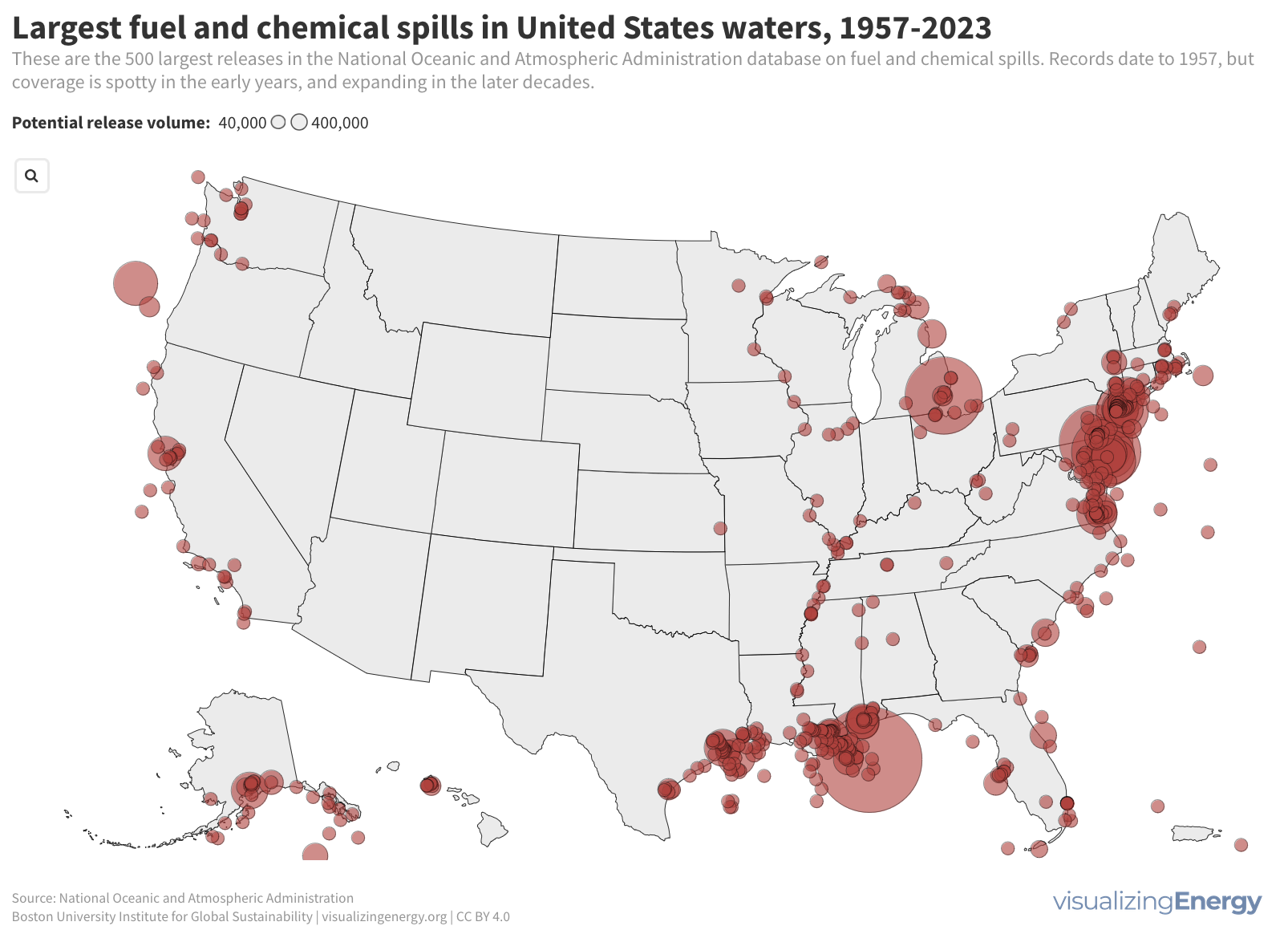
Crude oil and natural gas are refined into numerous fuel types and petrochemicals, contributing to over 6000 consumer products. However, extraction and processing lead to significant accidents, with approximately 4600 incidents reported since 1957, primarily affecting rivers and coastal areas due to industrial activities and transportation routes, highlighting environmental hazards.

Global oil and gas consumption increased by 14% from 2013 to 2023, posing a challenge to limiting global warming. JP Morgan Chase led in financing upstream oil and gas activities, providing over USD 67 billion to various companies. Concerns were raised about banks’ commitment to reaching net zero emissions and prioritizing policies allowing the purchase of carbon offsets, which may promote greenwashing. Some oil and gas companies have weakened their commitments to reduce investment in upstream projects.

The United States has played a significant role in global oil production, contributing 17% since 1900, with Texas being a major player, accounting for one-third of the nation’s oil production. Technological advancements like hydraulic fracturing and horizontal drilling led to record U.S. oil production in the 2010s, making the country the world’s largest oil producer and a net oil exporter.
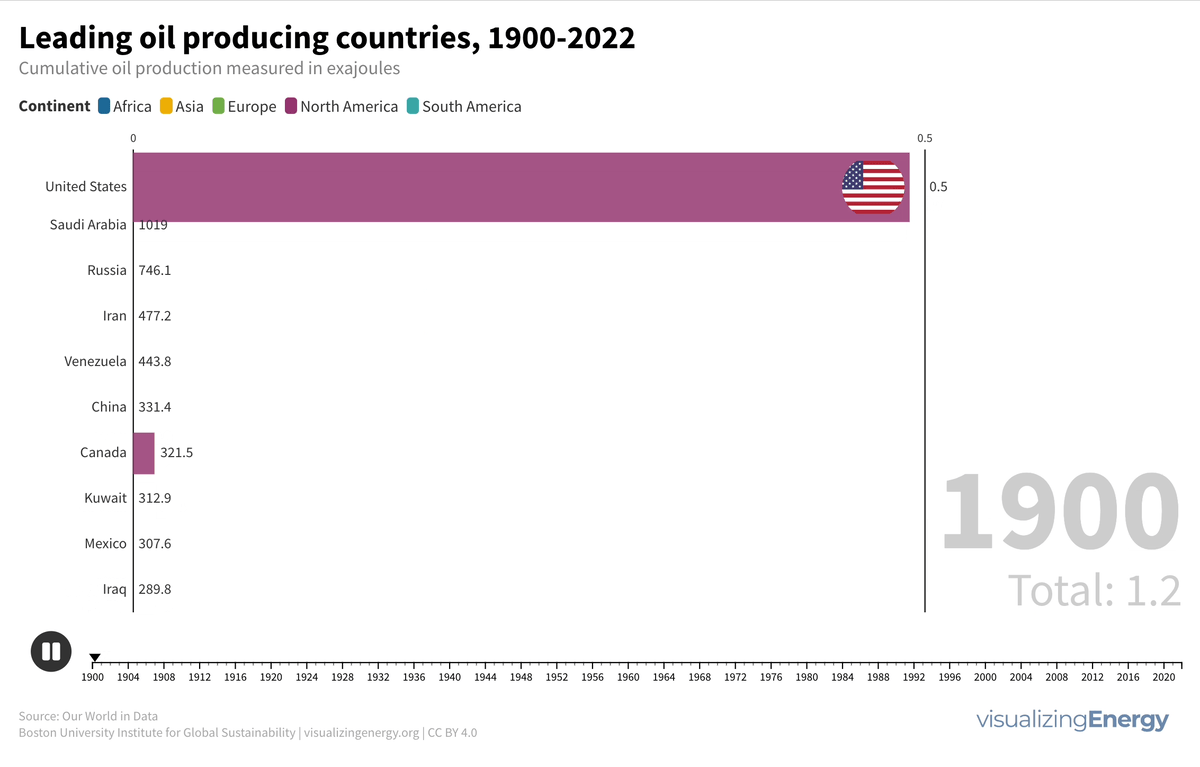
The commercial extraction of oil began in the 19th century in the US and Russia, initially for kerosene production. The introduction of the internal combustion engine increased oil demand. The Spindletop discovery in 1901 accelerated US oil production. OPEC’s formation in 1960 and market conditions led to price volatility, with consumption rising steadily in the 2000s.
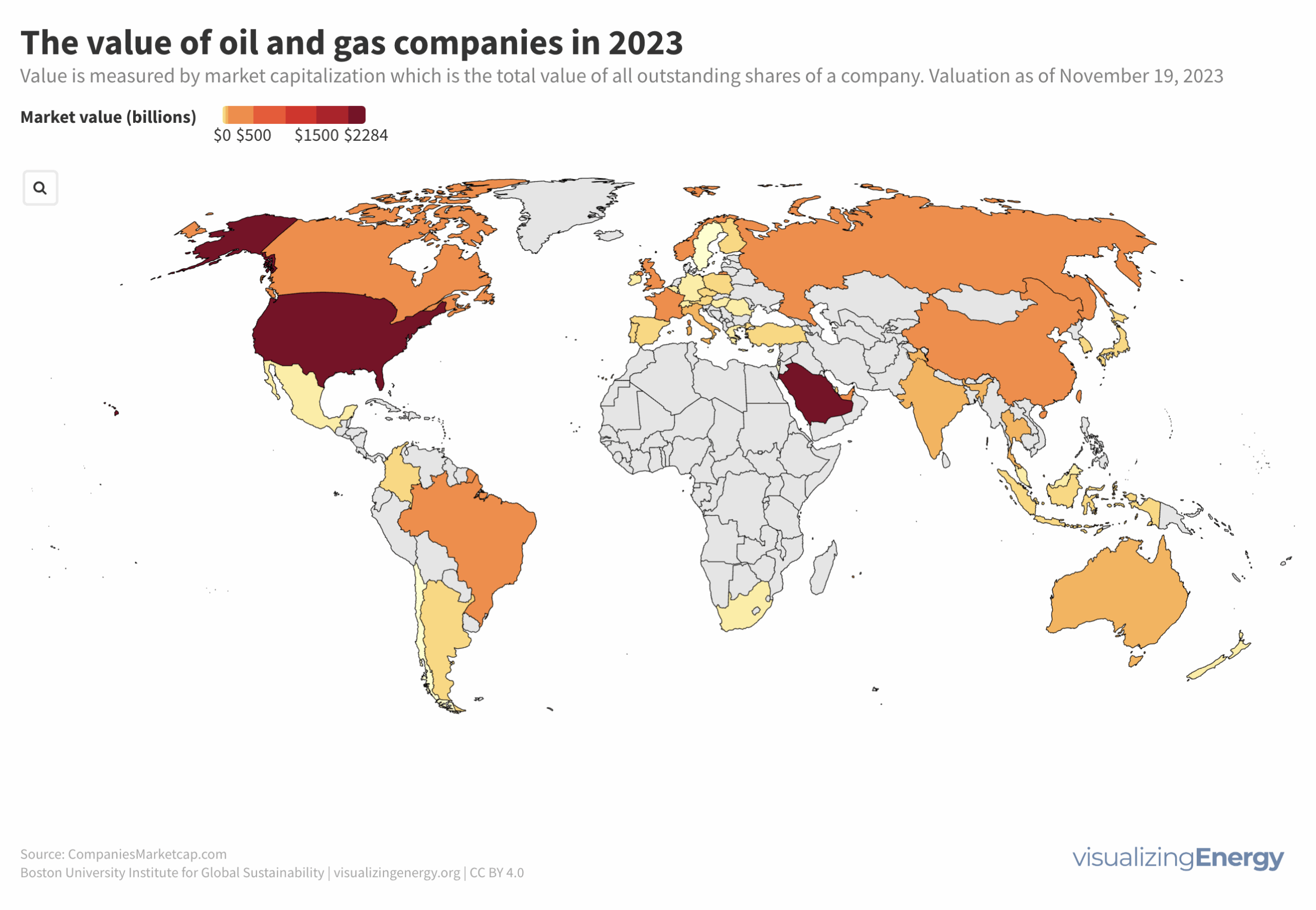
Oil and natural gas make up 55% of global energy use, with the top 350 companies holding a combined market cap of $7.2 trillion, comprising 7% of the world’s largest companies. State-owned enterprises control 90% of the world’s crude oil reserves. Just 8 companies hold 50% of the market cap.
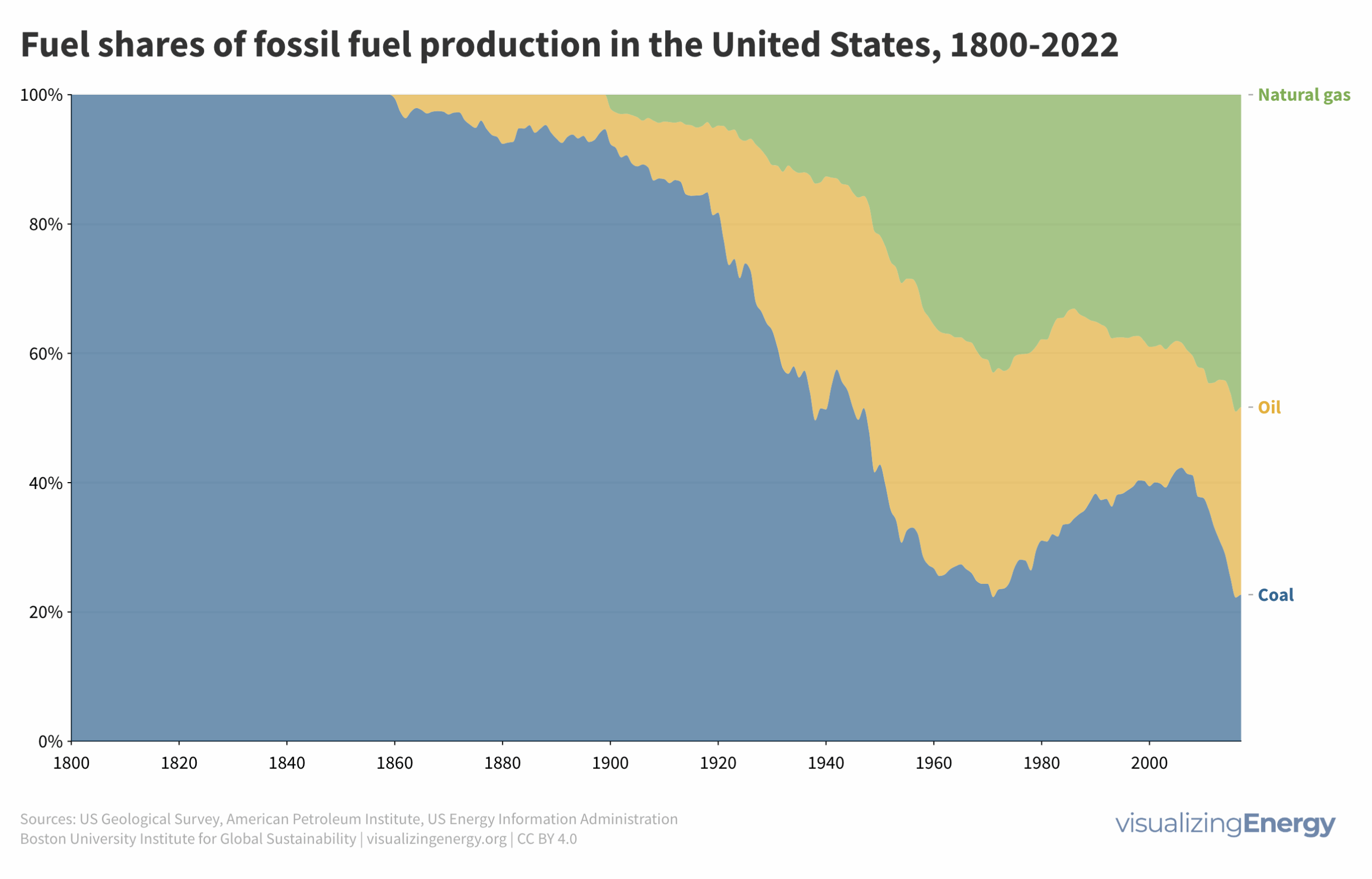
Coal, oil, and natural gas have played major roles in U.S. industrialization and energy. Coal dominated in the 20th century, but oil and natural gas gained prominence after World War II. Fracking revitalized oil and gas production, leading to major shifts in fossil fuel production and investment trends.
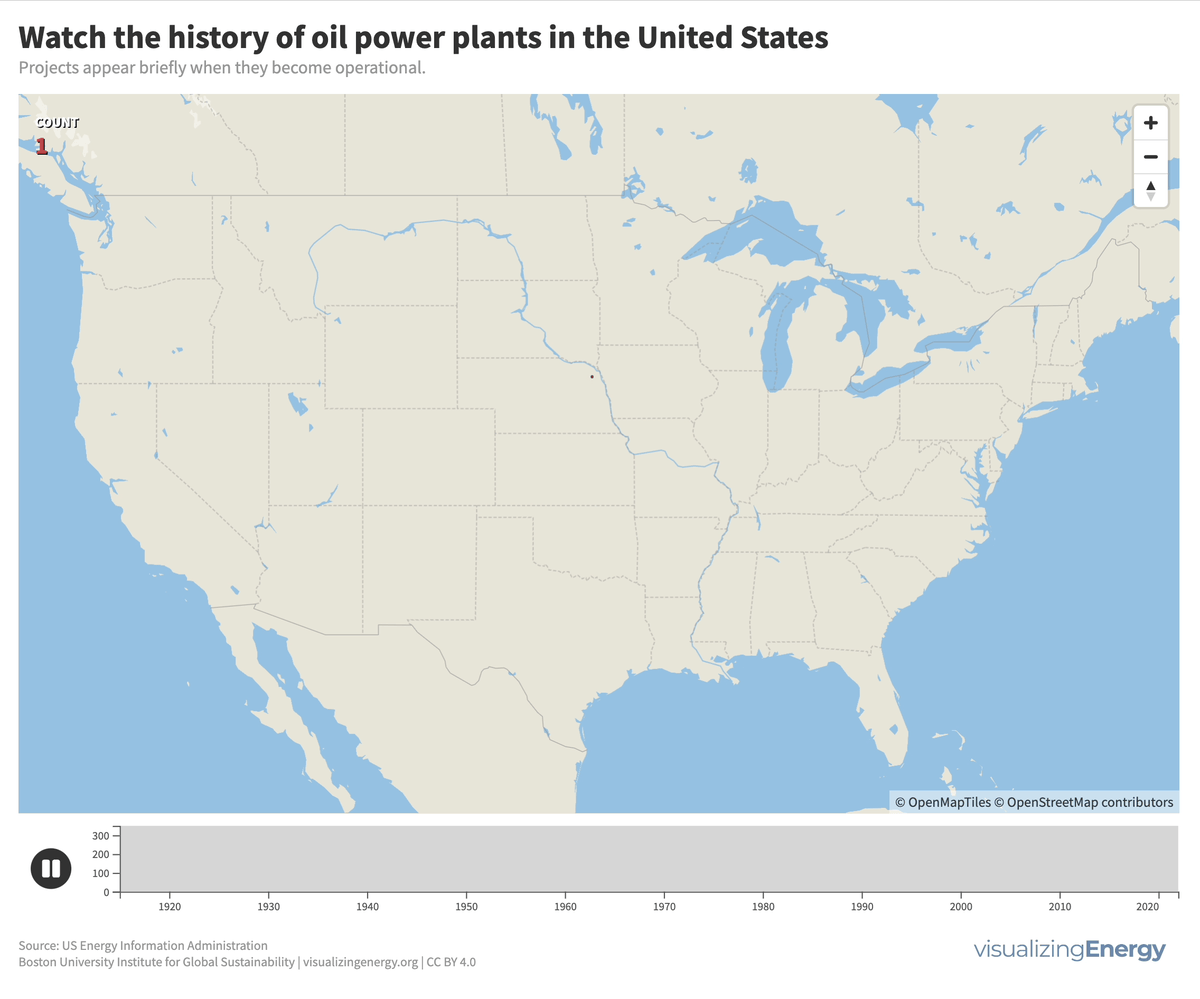
In 2022, the US had about 4,000 petroleum-burning generators, providing only 0.6% of the nation’s electricity due to lower efficiency and higher costs than alternatives. These smaller generators are mainly used for peak power and emergency backup, with policies since 1978 discouraging their use to reduce oil dependence for national security.